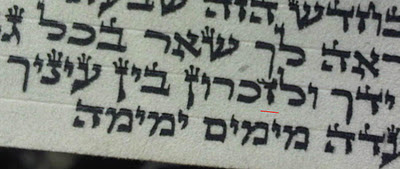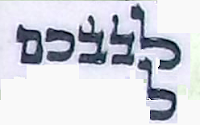a hole in the ches

This hole occured after the csiva. I think the ches is kosher, since it is still all one piece and has not lost its tzuras ois.
A place for English speaking sofrim (scribes), magihim (examiners), rabbis and vendors of Stam (Torah, Tefillin and Mezuzah scrolls) from around the world to communicate, share ideas, ask questions and offer support and advice.
.JPG)




